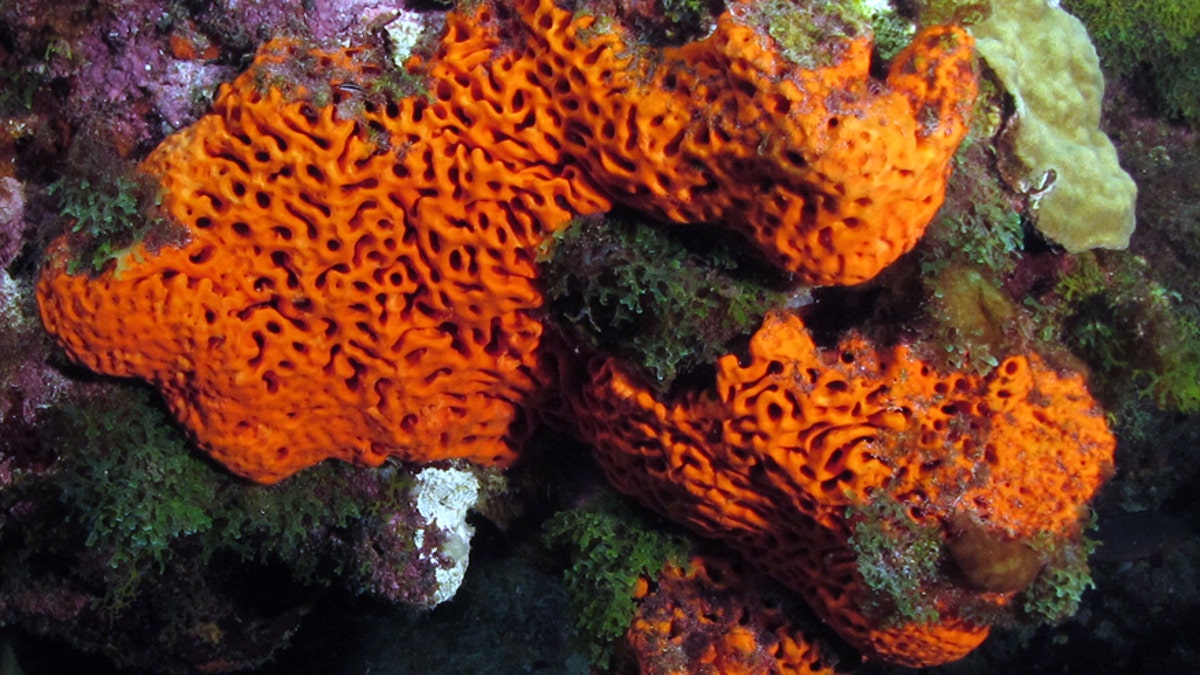
Agelas clathrodes or orange elephant ear sponge. (NOAA)
The seemingly lowly sponge, just by its very existence, might have paved the way for the evolution of complex life forms, including our own species, according to a new paper.
Sponges appear to have added oxygen to the deep ocean, creating an environment where more mobile, major oxygen-using animals could have evolved, holds the paper, published in the latest Nature Geoscience.
The research builds on work, presented earlier this year, which found that the most primitive sponges probably could survive in water containing very low levels of oxygen.
“There had been enough oxygen in ocean surface waters for over 1.5 billion years before the first animals evolved, but the dark depths of the ocean remained devoid of oxygen,” lead author Tim Lenton of the University of Exeter was quoted as saying in a press release. “We argue that the evolution of the first animals could have played a key role in the widespread oxygenation of the deep oceans. This in turn may have facilitated the evolution of more complex, mobile animals.”
Several lines of evidence support the theory. DNA analysis finds that the earliest sponges likely first emerged at least 700 million years ago, when the oceans contained little oxygen. Between 700 and 600 million years ago, the oceans gradually became more oxygenated, meaning more enriched with oxygen. Fossils of animals dating to 650 million years ago have been found.
Then there is the way that sponges feed. These multicellular organisms consist of pores and channels that allow nutrient-containing water to circulate through them.
As sponges feed, they filter out tiny particles of organic matter from the water. The particles millions of years ago would have included dead microbial matter, which rots and consumes oxygen as it does so. Sponges therefore helped to clean water of this material. Without all of the rotting going on, the water would have experienced increased oxygen levels, the researchers suggest.
More oxygen in the water then set the stage for even more complex life forms to emerge, such as the first predatory animals with guts that started to eat one another, marking the beginning of a modern marine ecosystem, with the type of food webs we are familiar with today.
It is widely accepted that the first terrestrial animals evolved from marine species. Mammals, including humans, are a class of animals that evolved from terrestrial species.
The jump from sponges to humans is, of course, a long one, but many researchers believe that sponges are the most likely candidate for an “Animal Eve,” referring to a single group of organisms that, through many stages of evolution, gave rise to all animals alive today.
The latest research also helps to answer a chicken-and-egg-type question: Which came first, a lot of sponges, or an oxygenated ocean deep? The answer, at least according to Lenton and his team, is the former.
“The effects we predict suggest that the first animals, far from being a passive response to rising atmospheric oxygen, were the active agents that oxygenated the ocean around 600 million years ago,” he said. “They created a world in which more complex animals could evolve, including our very distant ancestors.”